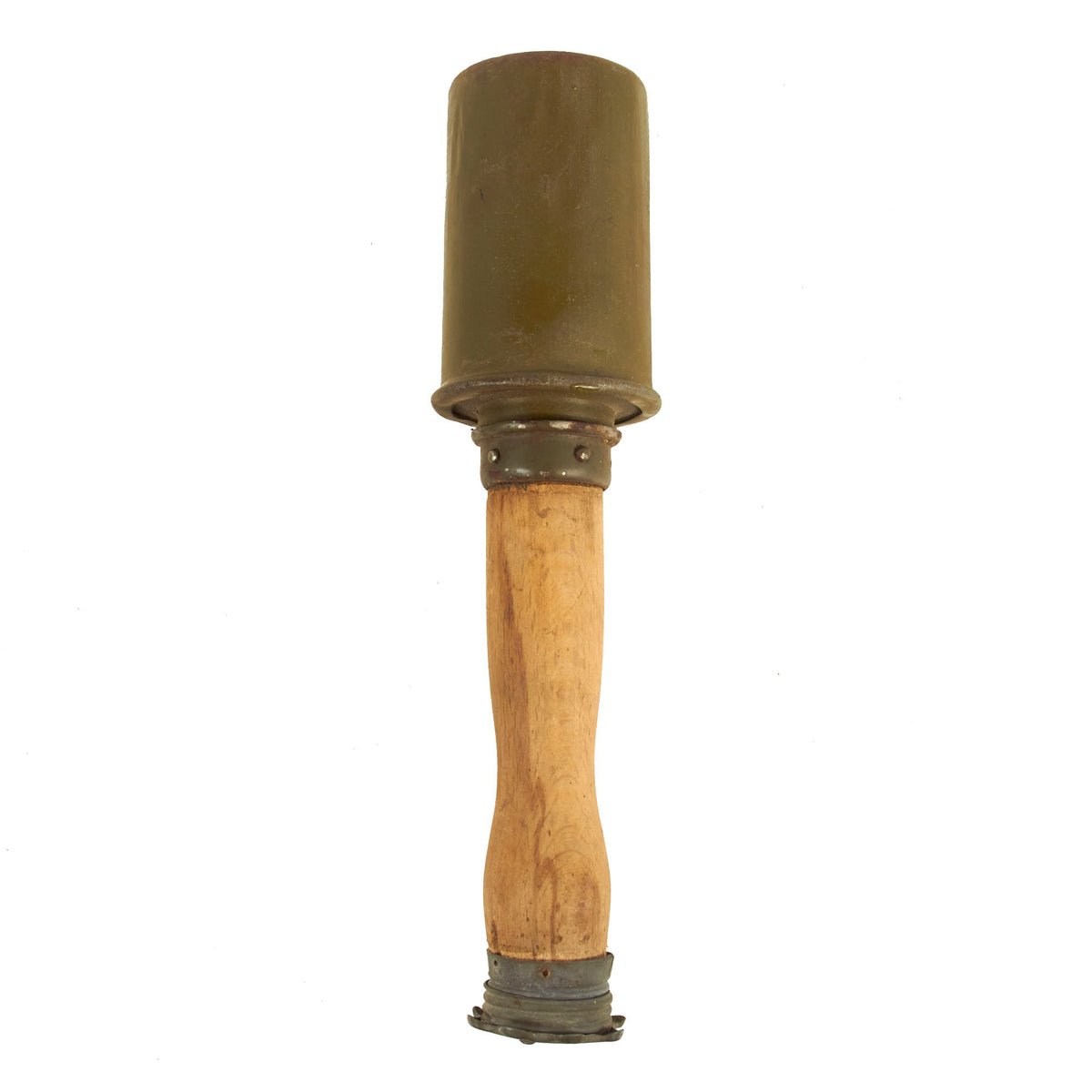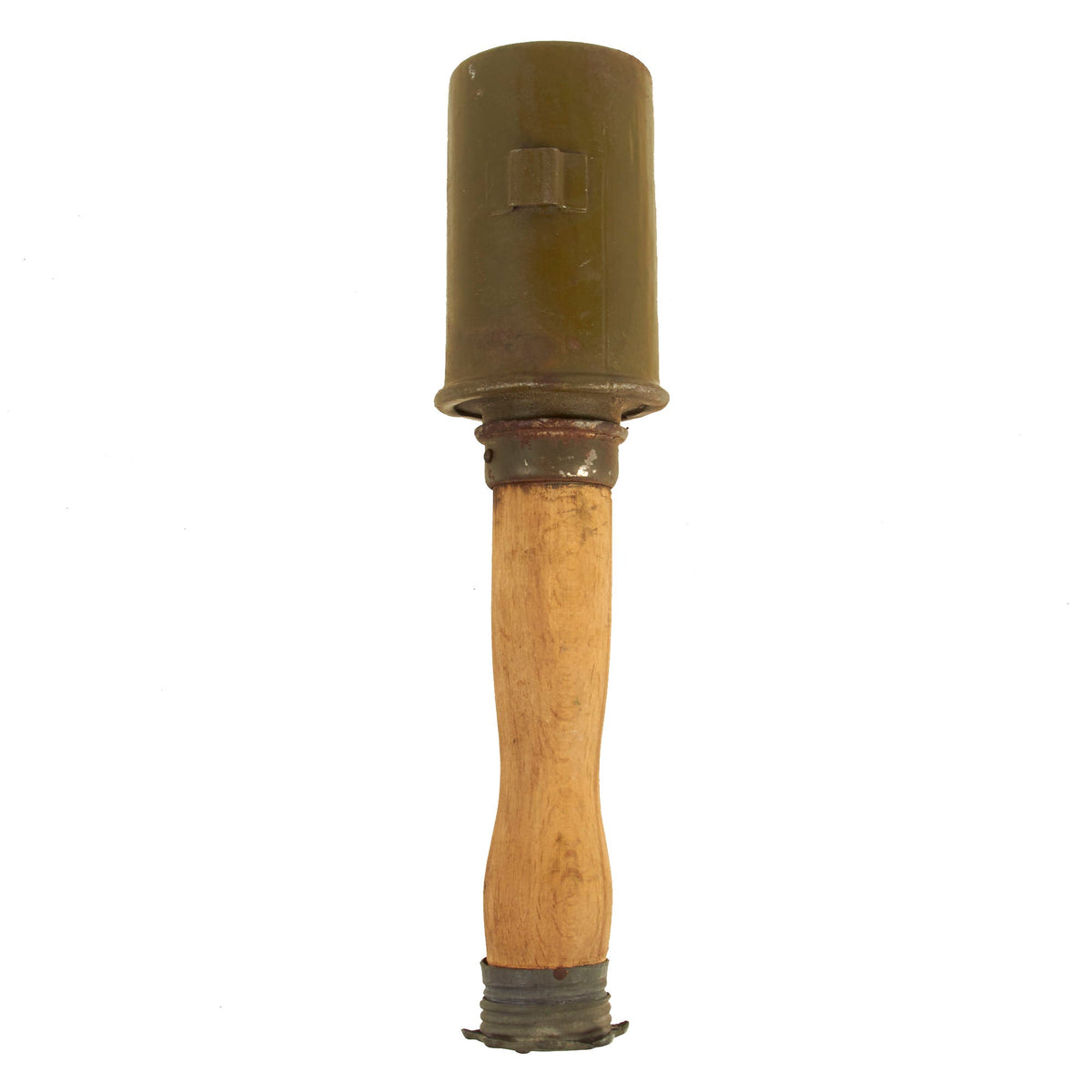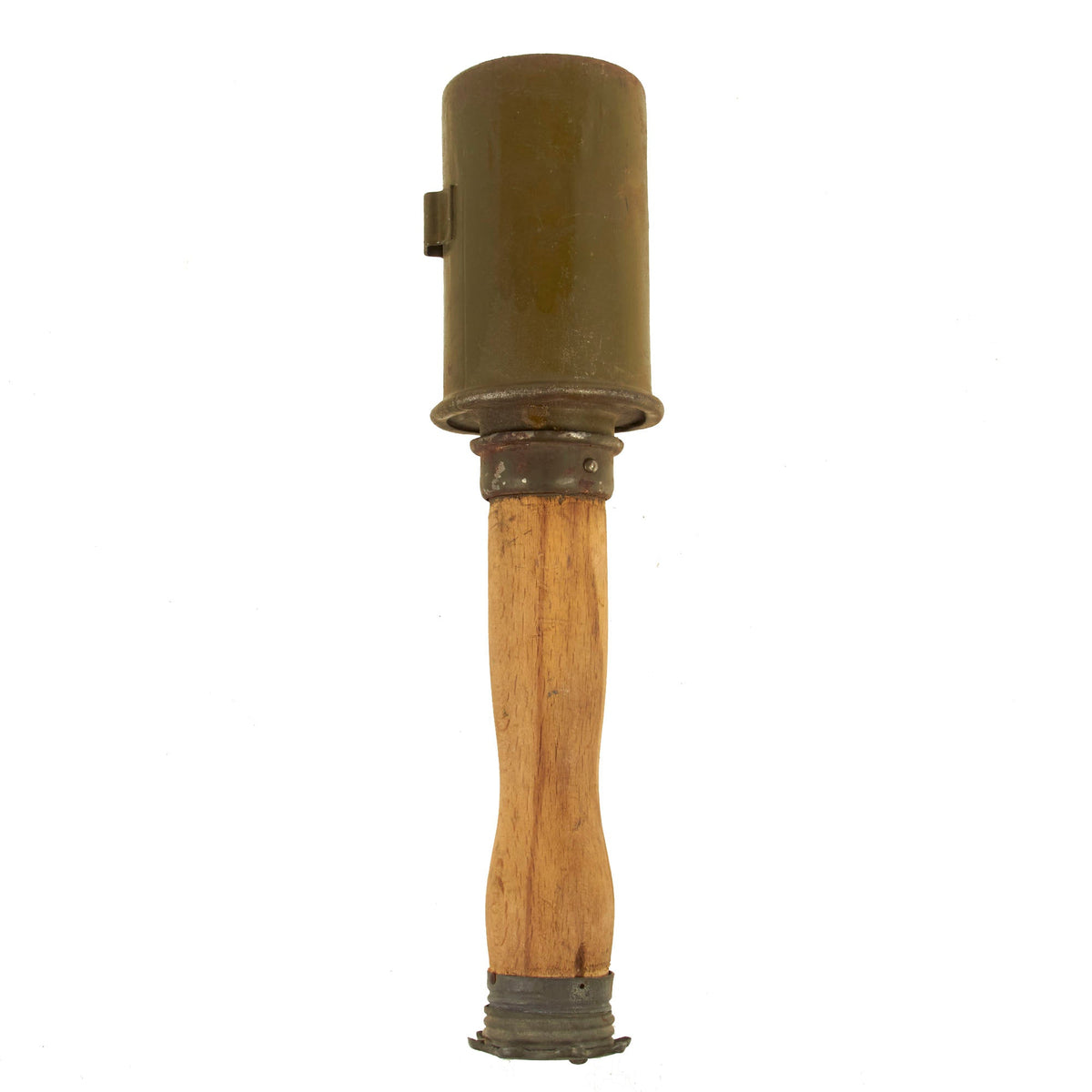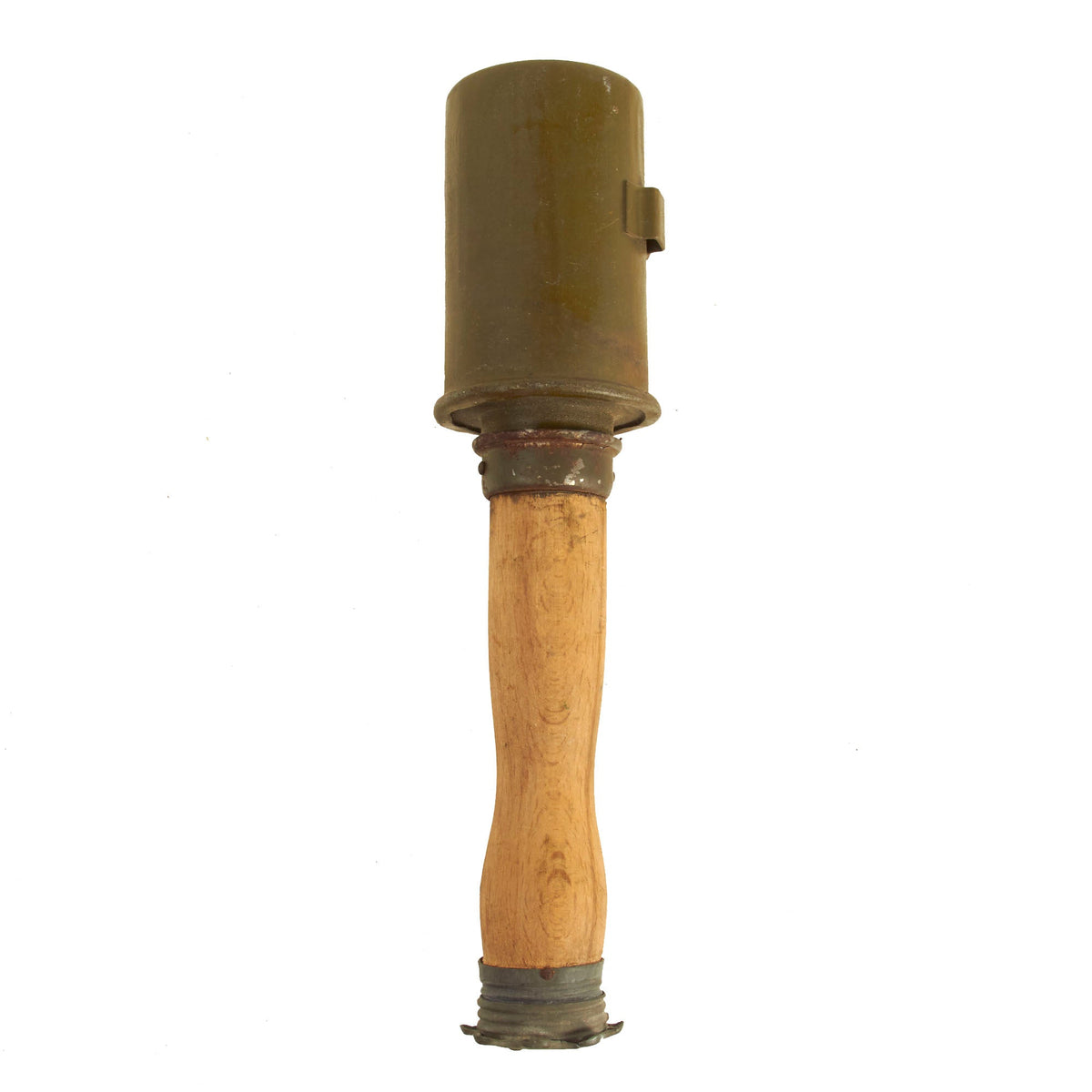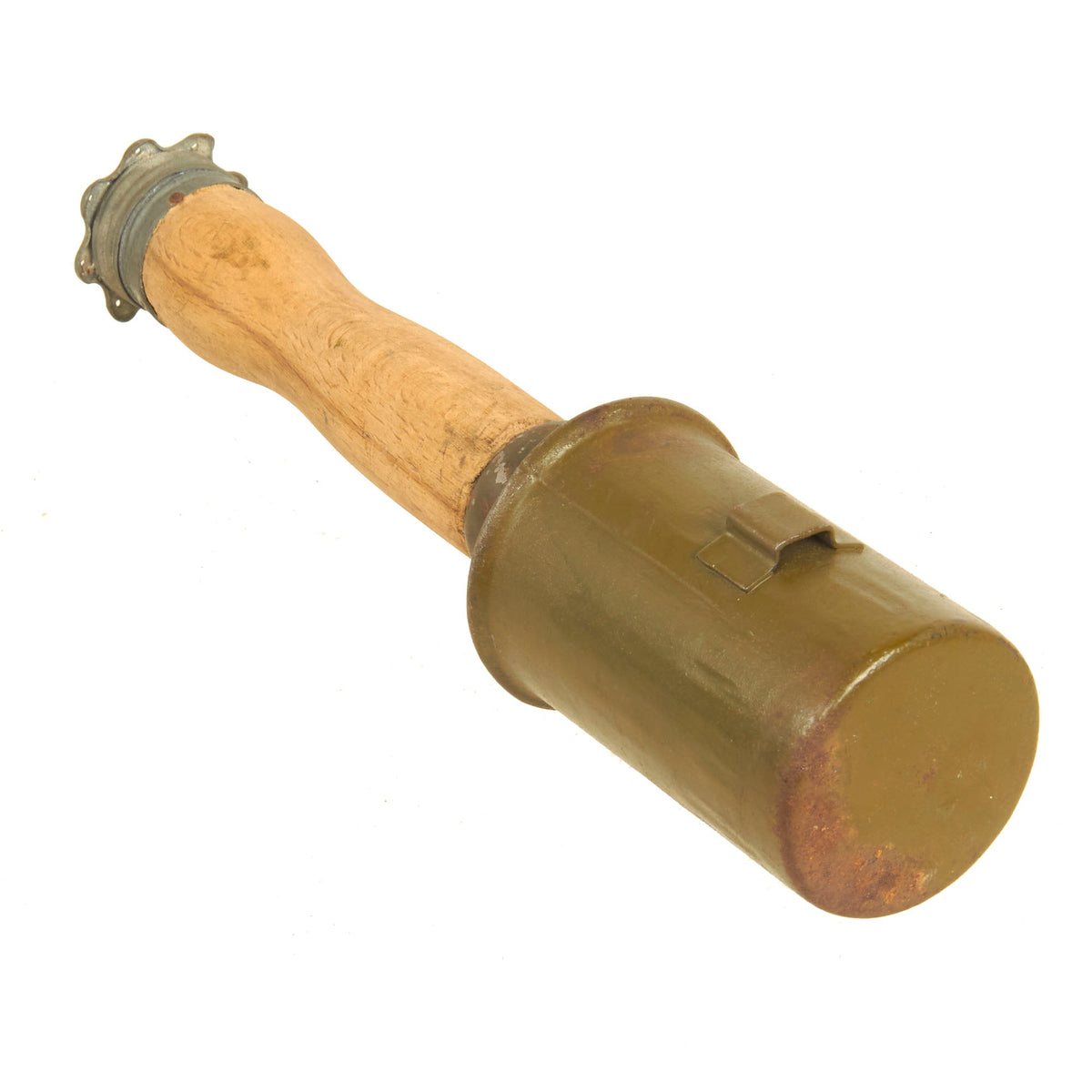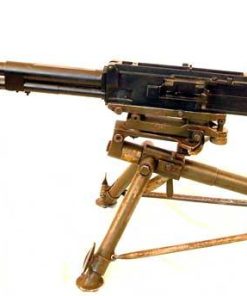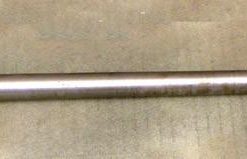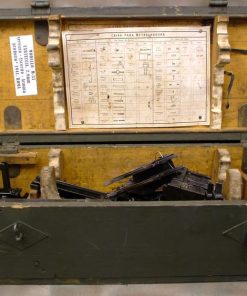Original Bulgarian WWII Inert Offensive Stick Grenade – Inert Original Items
$ 495,00 $ 148,50
Original Item: Only One Available. This is a fantastic example of a hard to find WWII Bulgarian offensive stick grenade. The stick grenade was based off of the Imperial German Model 1917 Stick grenade and was licensed to be built in Kazanlak, a town in Stara Zagora Province, Bulgaria. The grenade is totally inert and in complete compliance with the current BATF standards governing inert ordnance. It is void of any and all explosive content and cannot be used as a destructive device.
Not Available For Export.
As it was based off of the German Model 1917 stick grenade, any and all information on it is basically the same as the German version. The distinctive appearance of the stielhandgranate-family has led to them being called “potato mashers” in British Army slang, and they remain one of the most easily recognized infantry weapons of the 20th century. A further development of the Stielhandgranate was implemented during the later stages of World War I, affecting the priming system. The base of the Stielhandgranate’s handle was slightly redesigned, and a metal cover cap was introduced. This cap concealed the porcelain bead and pull cord, allowing it to simply rest freely inside of the handle. The operator pulled the cap off and then pulled the cord as with the M16 and this WWII Bulgarian example.
The head and of the grenade, which still retains the original belt hanger bracket, screws into the original handle collar nicely. The warhead is still able to be removed and you can inspect the interior if you would wish to do so. The interior does not contain an inert fuse assembly or porcelain bead.
The excellent condition handle is still quite firmly attached to the handle with the correct sealing washer. The handle exhibits excellent wood, with faint markings. The threaded cap is affixed in place, as well as the handle collar as well. The star shaped screw cap is still present, and is able to be removed but use caution as the collar is only secured by one nail.
One side is marked with 5 ½ while the other is blank, this number would be for the fuse delay.
A lovely rather rare example ready for further research and display.
Fast Shipping with Professional Packaging
Thanks to our longstanding association with UPS FedEx DHL, and other major international carriers, we are able to provide a range of shipping options. Our warehouse staff is expertly trained and will wrap your products according to our exact and precise specifications. Prior to shipping, your goods will be thoroughly examined and securely secured. We ship to thousands clients each day across multiple countries. This shows how we're dedicated to be the largest retailer on the internet. Warehouses and distribution centres can be located throughout Europe as well as the USA.
Note: Orders with more than one item will be assigned a processing date depending on the item.
Before shipping before shipping, we'll conduct a thorough inspection of the items you have ordered. Today, the majority of orders will be delivered within 48 hours. The delivery time will be between 3-7 days.
Returns
The stock is dynamic and we cannot completely manage it because multiple stakeholders are involved, including our factory and warehouse. So the actual stock may alter at any time. It's possible that you may not receive your order once the order has been made.
Our policy is valid for a period of 30 days. If you don't receive the product within 30 days, we are not able to issue a refund or an exchange.
You can only return an item if it is unused and in the same state as the day you received it. You must have the item in its original packaging.
Related products
Uncategorized
Uncategorized
Uncategorized
Uncategorized
Australian WWII Owen MK1 Machine Carbine SMG Custom Fabricated Replica with Sling Original Items
Uncategorized
Uncategorized
Uncategorized
Uncategorized
Uncategorized
Band of Brothers ORIGINAL GERMAN WWII Le. F.H. 18 10.5cm ARTILLERY PIECE Original Items
Uncategorized
Uncategorized
Uncategorized
Uncategorized
Uncategorized
Australian WWII Owen MK1 Machine Carbine SMG Custom Fabricated Replica with Sling Original Items
Uncategorized
